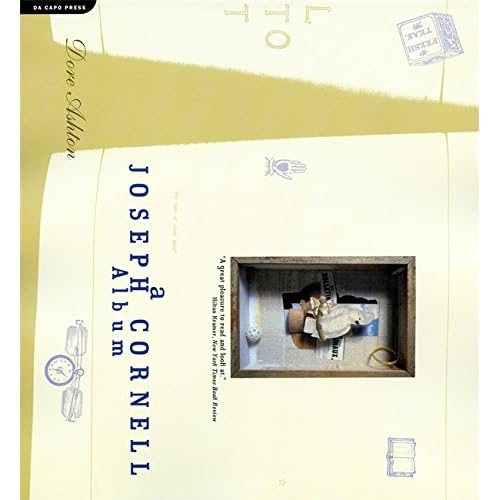A Joseph Cornell Album
Category: Books,Arts & Photography,History & Criticism
A Joseph Cornell Album Details
Review "The small boxes and collages upon which Cornell lavished his immense gifts are now among the most highly prized of contemporary works of art....Ashton dwells at length on those figures whom Cornell held in sacred regard....A great pleasure to read and look at." -- Hilton Kramer, New York Times Book Review Read more About the Author Dore Ashton's books include A Joseph Cornell Album, Picasso on Art, A Critical Study of Philip Guston, A Fable of Modern Art, The New York School, Noguchi East and West, and A Reading of Modern Art. She lives in New York City. Read more

Reviews
Joseph Cornell was profoundly inspired by works of poetry, and other literature. In this beautifully written book, first published in 1974, the respected modern art historian, Dore Ashton, explores the relationship between Cornell's poetic art works and the works of poetry and literature (as well as opera, music, dance, and philosophy), which he held in such high esteem. Ashton's own astute observations are punctuated with examples of text by those authors Cornell most admired (including Gerard de Nerval, Emily Dickenson and Mary Baker Eddy), as well as by writing from Cornell himself. The result is an intimate look at the development of Cornell's thought and his unique poetic objects... much as if we were peering into his diaries or sneaking a peak into his working studio. If Cornell's work was clearly indebted to the writings of various poetic predecessors, then later poets more than reciprocate this admiration. The book ends with a special section of elegiac contributions in tribute to Cornell's art, by such esteemed poets as John Ashberry, Elizabeth Bishop, Richard Howard and Octavio Paz. Perhaps the sole flaw of this well-written book is its limited amount of reproductions of Cornell's work. There are several fine illustrations of rarely seen pieces, and a number of beautiful photographs of Cornell and his home taken by Duane Michals, but "lavishly illustrated" it is not. If you are looking for great color reproductions of Cornell's collages and boxes, look elsewhere; you will find this book quite inadequate for that purpose. If, however, you are interested in exploring the art and writings that inspired Cornell's work, this may be just the place to start.


